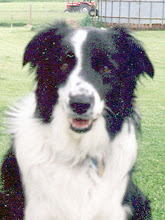I smell of sheep, and coarse white fiber clings to my jeans.
Today the United States Department of Agriculture vet visited the farm to inspect the flock. This meant that, unlike most days, I touched the sheep.
The sheep weren't happy. They don't care to be touched by humans with predatory eyes.
For the inspection, we put the 18 ewes in a stall measuring 8 x 8 feet. Packing them in a tight area makes them less likely to run and jump. The red ewe lamb, though, shows her athleticism when she leaps atop the others.
"It's the sheep mosh pit," I say to the vet.
The vet checks each ewe's ear tag and matches it with our records. Our sheep are enrolled in the Scrapies Eradication program. Scrapies is a fatal, degenerative disease affecting the central nervous system of sheep and goats. Because sheep don't exhibit the disease until well into adulthood, it's a difficult disease to identify and track.
Those in the program tag their sheep with federal scrapies identification numbers. Our records show what happens to each of our sheep. If one is sent to slaughter, the date and location is noted. If someone buys one, the buyer's name and address is recorded. This provides a tracking record if one of our sheep is found to have scrapies.
The scrapies eradication program has drastically reduced the number of scrapies cases in the U.S. sheep flocks. However, cases still exist. As with most diseases, the challenge is eliminating those last cases.
As with most challenges, it requires time and commitment, and, in my case, a little bit of sheep fuzz.
Wednesday, October 5, 2011
Subscribe to:
Post Comments (Atom)













No comments:
Post a Comment